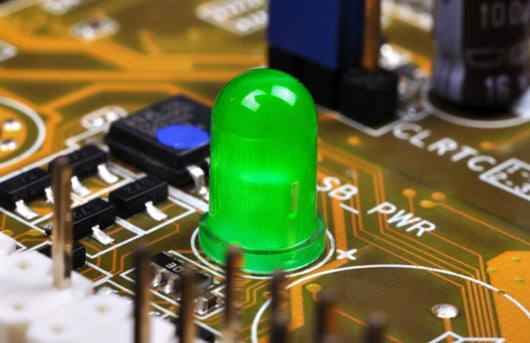Author: Editorial board

R&D in SLIM: how we customize products and services
At SLIM, Research and development has been built up and developed over the company's 50 years of existence and is the basis for the realisation of customised lighting solutions.
SLIM's R&D department, over time and with perseverance, has been structured and enriched with fundamental tools to establish proactive collaborations with customers, with the aim of developing new high-performance and aesthetically appealing products.
The study and in-depth study of the latest lighting technologies and solutions have enabled us to increase our skills: this know-how is essential to provide the customer with the most suitable response, both in terms of performance and aesthetics, to the need expressed.
But what is actually meant by R&D? According to the definition given by Accademia Treccani, Research and development is defined as the ‘Set of creative activities undertaken in a systematic way both to increase the body of knowledge and to use that knowledge for new applications.’
R&D, in fact, requires long-term investment to develop new products that meet the highest standards of quality and innovation. In this article, we shed light on the research and development phases that enable us to bring new lighting components to light, ideal for the different types of applications to which SLIM provides its products and services.
Click on the button below to find out more about our company!
The stages of research and development at SLIM
Research and development at SLIM is mainly developed from two strands: custom driven or market study. In the first case, it is a matter of researching and developing a new solution from the customer's requirements. In the second case, on the other hand, starting with analysis and research, it is the technical department that directly tries to intercept a latent need by proposing an innovative solution for a specific sector.
With this in mind, it is essential to have a correct perception of the needs of a given sector, to go into it in depth in order to be proactive. As was the case with the development of LED micro-spotlights: high power light indicators with a very small LED source suitable for illuminating specific areas of coffee machines, food-equipment including ovens, hoods and hobs, and vending machines. For further details, we recommend the in-depth article 'Micro LED spotlights'.
Continuous support: from concept to development
The custom-driven research and development process, as the term implies, is driven by the customer's request and follows certain specific steps. It tends to be the case that the customer's technical department gets in touch with SLIM's technical department, submitting an ad hoc request or requirement, which, however, can change during the course of the project.
After requesting and investigating all preliminary and necessary information about the final output (such as type of source, light colour, shape of the component, etc.), the technical experts determine which solution is most appropriate. A prototype is then created (with a 3D printer) in order to provide the customer with an initial sample with which to evaluate the final effect of the required solution. In the case of the development of fibre optic solutions, SLIM provides the customer with an actual kit with LED source and fibre optic, so that the customer can try to place the light solution in the dedicated profile or space and visualise the effect and performance.
If the customer is satisfied with the proposal, they are asked to share the 3D drawing of the application on which the lighting solution is to be inserted in order to assess the technical constraints, such as space, footprint, heat dissipation possibilities, and the scope to identify the most appropriate light source in terms of aesthetics and efficiency.
Specifically, for the development of a custom signal with internal PCB circuit, in addition to the above, it is necessary to study how many LEDs to place on the circuit depending on the size and lighting effect the customer wants to achieve.

Today, one of the most popular pluses, starting with the” driving” sector of automotive, involves the masking of the light points of individual LEDs to achieve a more uniform and homogenous lighting effect. This involves additional studies on light guides, scattering and transmission methods and materials. The sharing of the 3D model of the application is a very delicate phase, in which confidentiality agreements are put in place by both parties in order to protect the development of a fruitful collaboration. All stages of research and development take place within SLIM 's technical department, and SLIM's technicians offer continuous support: from concept to finished product development. This allows us to follow step-by-step the evolution of the project, providing rapid responses to requests for changes, with the aim of achieving the best quality solution for the end customer.
Are you looking for a customised lighting solution? Click on the button below and put us to the test with a challenging request for state-of-the-art light signalling!
